Building your own DIY grow tent can be a fulfilling project that brings your gardening skills to new heights, regardless of the outdoor climate you live in. This guide is designed to show you how to harness the power of DIY grow tent setups, transforming any space into a thriving garden for your plants. Each step is laid out to make the process as simple and effective as possible, ensuring you can create the perfect environment for your indoor garden.
From planning your space efficiently to selecting the right materials and setting up the necessary climate control systems, this guide covers all the essentials. We provide you with 10 easy DIY grow tent setup ideas that cater to various needs and spaces. So, get ready to explore how you can bring these ideas to life, guaranteeing a successful and productive grow tent that your plants will love. Stay tuned for step-by-step instructions that will help you every step of the way.
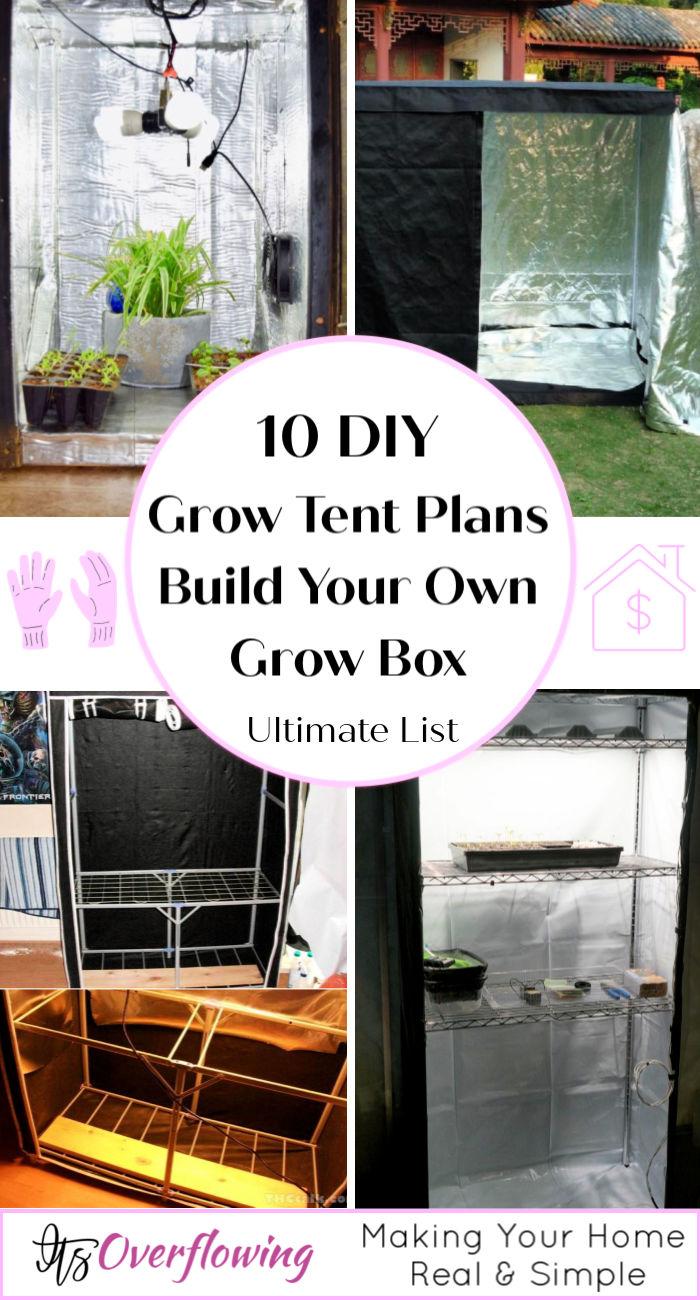
Why Build Your Own DIY Grow Tent
Building your own DIY grow tent can be a smart and satisfying decision for any indoor gardening enthusiast. Here’s why taking the DIY route is a worthwhile endeavor:
- Customization: When you build your own grow tent, you have the flexibility to tailor it to the specific needs of your plants. You can adjust the size, the number of shelves, and where to place lights and fans for optimal growth conditions.
- Cost-Effective: Pre-built grow tents can be expensive. By choosing the DIY approach, you use materials that are often less costly and readily available. This means you can save money while still providing a quality environment for your plants.
- Educational Experience: The process of constructing a grow tent is a valuable learning experience. You gain a deeper understanding of what your plants need to thrive and how various environmental factors, such as light and humidity, affect them.
- Quality Control: By building the grow tent yourself, you ensure that the materials used are durable and the construction is solid. This can often lead to a more reliable setup than some of the cheaper, pre-fabricated options on the market.
- Pride in Craftsmanship: There’s a sense of accomplishment that comes from creating something with your own hands. Your DIY grow tent is not just a space for your plants to flourish, but also a testament to your dedication and skills as a gardener.
Remember, the goal is to create a controlled environment that leads to healthy, productive plants. With a DIY grow tent, you get to make important decisions that contribute to the success of your indoor garden.
DIY Grow Tent Setup Guide
Building a DIY grow tent is a fantastic way to start your indoor gardening journey, ensuring your plants get the environment they need to thrive, regardless of the weather outside. Whether you want to grow herbs, vegetables, or exotic plants, setting up a grow tent can be simple and rewarding. Follow this guide for straightforward ideas to kickstart your indoor garden.
Understand the Basics of a Grow Tent
Firstly, it’s important to know what a grow tent is and why it’s beneficial for your plants. Essentially, a grow tent is a controlled, indoor gardening space that allows you to manage the environment to suit the needs of your plants perfectly. It comprises a few key components:
- Structure and Space: Determines the size and design of your grow tent, impacting how many plants you can grow.
- Cover: A reflective material lines the inside to maximize light efficiency to the plants.
- Lighting: Choose between LED, HID, or CFL lights depending on your plants’ needs. Adequate lighting is crucial for plant growth, especially for photosynthesis.
- Ventilation: Install fans and filters to manage airflow and odor. Proper airflow prevents the buildup of excess humidity and heat, keeping pests and diseases at bay.
- Accessories: Consider pots, trays, timers, and temperature/humidity meters for better growth management.
Step-by-Step Guide to Setting Up Your DIY Grow Tent
Learn how to set up your own DIY grow tent with this step-by-step guide below:
1. Plan Your Space
Consider the size of the area you can dedicate to your grow tent. Think about the height, width, and depth, keeping in mind the size that your plants will eventually grow to.
2. Choose Your Frame
A sturdy frame is essential. PVC pipes, metal poles, or even a wooden frame can serve as a good foundation. Ensure it can support the weight of your lights and other equipment.
3. Select the Right Cover
Your grow tent’s cover should be made of a reflective material on the inside to ensure light gets distributed evenly. Heavy-duty canvas is commonly used for the exterior to block out light.
4. Install Lighting
LED grow lights are popular due to their efficiency and lower heat output. Make sure they are securely installed and evenly spaced.
5. Set Up Ventilation
A combination of an exhaust fan and passive air intakes will help maintain fresh air circulation. Position your fan at the top of your tent to remove warm air, and have adjustable openings at the bottom for cool air to enter.
6. Monitor Climate
Keeping an eye on temperature and humidity levels is vital. Use a thermometer and hygrometer to monitor these conditions and ensure they are within the optimal range for your plants.
7. Think About Accessories
Depending on your plants’ needs, consider adding grow shelves, nutrient reservoirs, or carbon filters to manage odor control.
Ensuring Success with Your DIY Grow Tent
- Start Simple: Don’t overcomplicate your setup initially. Begin with a manageable size and scale up as you gain confidence.
- Regular Checks: Make it a habit to check on your plants regularly. Look for signs of stress, nutrient deficiencies, or pests.
- Learn and Adjust: Be prepared to learn from experience. You may need to adjust light heights, ventilation, or watering schedules as you go.
Final Thoughts
Building a DIY grow tent doesn’t have to be daunting. With the right preparation and a bit of creativity, you can create a thriving indoor garden. Remember, the goal is to provide the best environment for your plants to flourish. Take your time to understand each component’s role, and enjoy the process of nurturing your green space.
FAQs on DIY Grow Tents
Discover essential tips and tricks in our DIY Grow Tent FAQs – your ultimate guide to creating the perfect environment for your plants.
Why Build Your Own DIY Grow Tent?
Building your own DIY grow tent can offer you the flexibility to design a grow space that fits your specific gardening needs, preferences, and space restrictions. It’s also a cost-effective way to create the perfect environment for your plants to thrive in, especially in climates where outdoor gardening is seasonal or not feasible. Plus, it’s a rewarding project that can bring you closer to your hobby of gardening.
What Materials Do I Need for a DIY Grow Tent?
For a basic DIY grow tent, you will need:
- A sturdy frame (PVC pipes, metal poles, or wood)
- Reflective material for the interior (Mylar, white paint, or aluminum foil)
- A durable covering (canvas or heavy-duty plastic)
- Grow lights (LEDs are highly recommended)
- Ventilation system (exhaust fan and passive air intakes)
- Optional accessories like shelves, nutrient reservoirs, and carbon filters
How Do I Choose the Right Size for My Grow Tent?
The size of your grow tent depends on a few factors:
- The number of plants you want to grow.
- Type of plants; some need more space to thrive than others.
- The available space you have in your home.
Start by assessing the room you plan to use and consider how much of that space you’re willing to dedicate to your garden. Remember to factor in enough room for the lights and ventilation system to fit comfortably.
Can I Use Any Type of Light for My Grow Tent?
Not all lights are suitable for plant growth. LED grow lights are the most efficient and the least heat-emitting option, making them ideal for a DIY grow tent setup. Fluorescent lights can also be used, especially for seedlings or low-light plants. It’s important to choose lights specifically designed for growing plants to ensure they provide the right spectrum of light.
How Important Is Ventilation in a Grow Tent?
Ventilation is crucial in maintaining the right environment inside your grow tent. It helps in:
- Regulating temperature
- Managing humidity levels
- Preventing mold and mildew growth
- Ensuring plants have enough CO2 for photosynthesis
A combination of an exhaust fan to remove warm, stale air, and passive intakes to bring in fresh, cool air usually works well.
How Often Should I Check on My Plants in a DIY Grow Tent?
It’s advisable to check on your plants daily if you can. This allows you to monitor their health, spot any signs of stress or disease early, and adjust the environment as needed. Pay attention to their watering needs, growth progress, and any changes in their leaves or stems.
What Are the Common Issues to Look out For?
When maintaining a DIY grow tent, watch for:
- Pests and diseases: Regular checks can help catch any early signs of infestation or sickness.
- Nutrient deficiencies: Yellowing leaves or stunted growth can indicate a lack of vital nutrients.
- Environmental stress: Drooping leaves might suggest issues with temperature, humidity, or irrigation.
By being vigilant and responsive to your plants’ needs, you can enjoy a successful harvest from your DIY grow tent.
10 Easy DIY Grow Tent Setup Ideas
Discover 10 simple ideas for setting up your own DIY grow tent. Start growing your plants with ease and efficiency using these helpful tips and tricks.
1. Easy DIY Sturdy Indoor Grow Tent
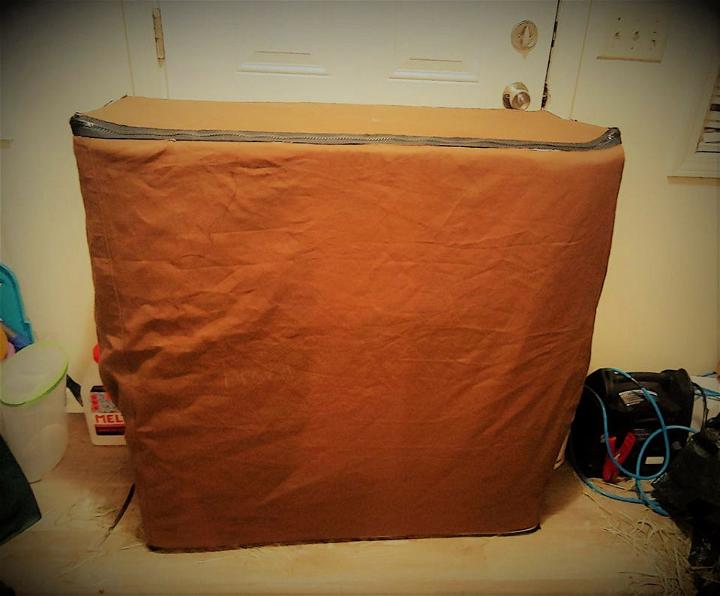
Crafting a DIY sturdy indoor grow tent can be a rewarding project for gardening enthusiasts looking to cultivate herbs and vegetables year-round. Instructables offers a comprehensive guide that empowers you to build a durable and customizable indoor garden. With a focus on quality materials, the guide walks you through creating a robust frame from shelving units, measuring and preparing fabric, and incorporating reflective insulation for optimal plant growth.
The step-by-step instructions are easy to follow, making it possible to assemble a grow tent that outlasts many on the market. Tailor the tent with vents, ducting, and pockets to suit your gardening needs, and enjoy the fruits of your labor with a thriving indoor oasis.
2. Handmade Grow Tent for Indoor Succulents
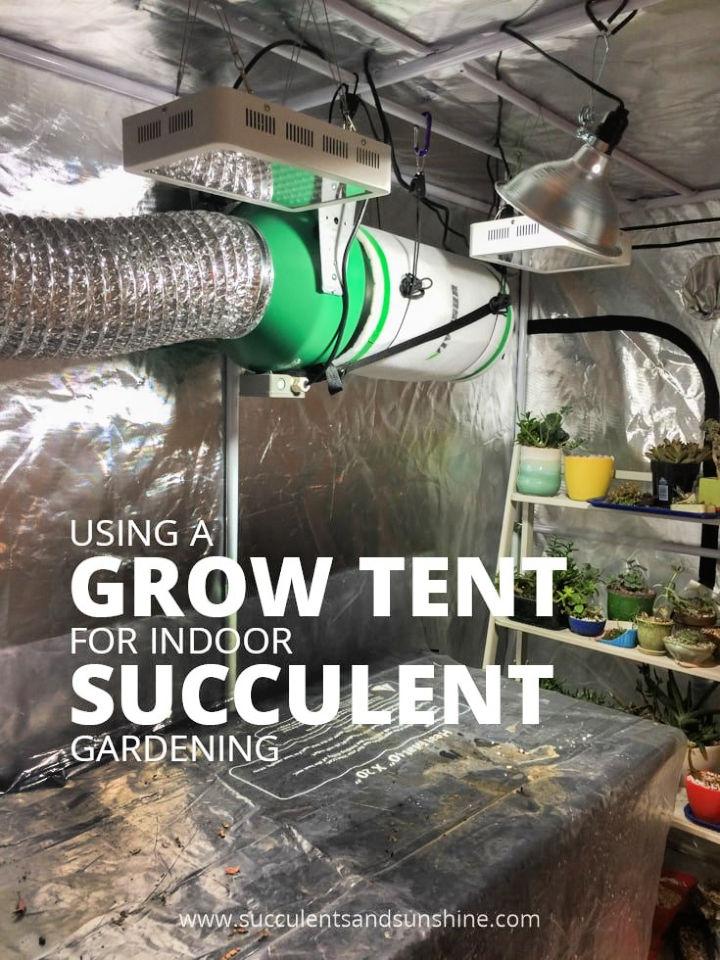
Maintaining healthy indoor succulents can be a challenge, especially during the colder months when sunlight and airflow are limited. Succulents and Sunshine provides a comprehensive guide on utilizing a grow tent to create an ideal environment for your succulent plants year-round.
With insights on the benefits of using grow lights, ensuring safety for pets and children, and tips on optimizing air circulation, this guide is an invaluable resource. Discover how to foster successful propagation, prevent pest issues, and learn about the Galaxy Grow Tent’s balance of quality and affordability. Equip yourself with the knowledge to keep your succulents thriving indoors with the help of a grow tent.
3. How to Make a Grow Tent at Home
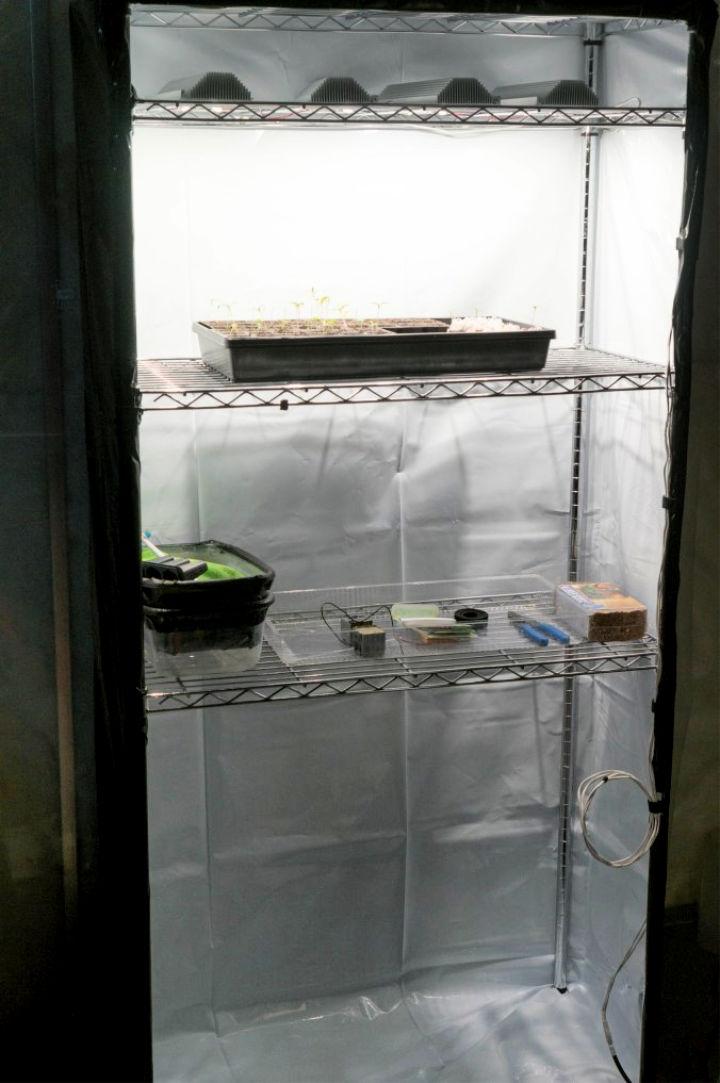
Looking to harness the full potential of your indoor garden without breaking the bank? LED Gardener offers a comprehensive guide to constructing a cost-effective DIY grow tent for under $100. This step-by-step tutorial empowers you to create an environment that maximizes light efficiency and allows precise control over temperature and humidity.
By using readily available materials like an adjustable shelving unit, reflective poly, and sturdy tape, you can craft a personalized space for your plants to thrive. The guide is designed to be accessible, ensuring even those new to DIY projects can achieve great results. With clear instructions and practical tips, you’ll be able to optimize your indoor gardening setup for superior growth and yield.
4. Inexpensive Homemade Grow Tents
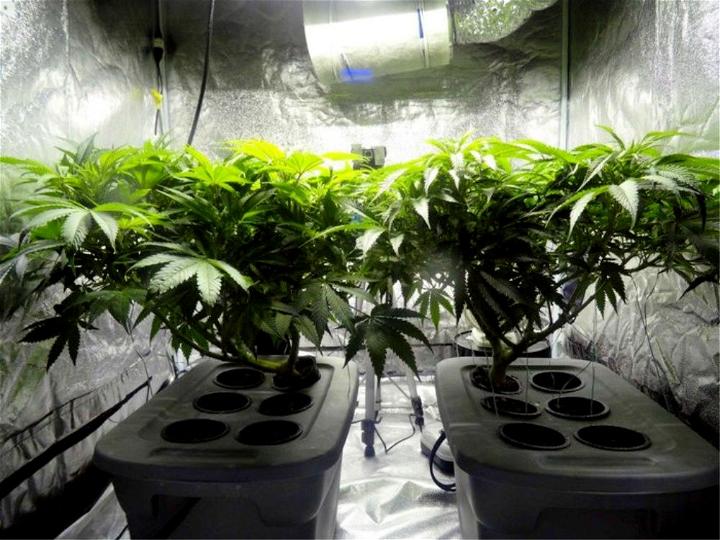
Discover how to create your own indoor grow tent with Leafbuyer‘s comprehensive How-To Guide. Joey Wells offers insightful tips on constructing a cost-effective, stable environment for your plants using simple materials like PVC piping, LED lights, and Mylar. Ideal for those interested in cultivating their own marijuana, this guide takes you through each step, from building a sturdy frame to ensuring proper ventilation. Learn how to manage light, temperature, and nutrients to optimize your indoor garden. Whether you aim to grow indica or sativa, this guide is tailored to support your horticultural endeavors with practical, easy-to-follow advice.
5. How to Assemble a Grow Tent
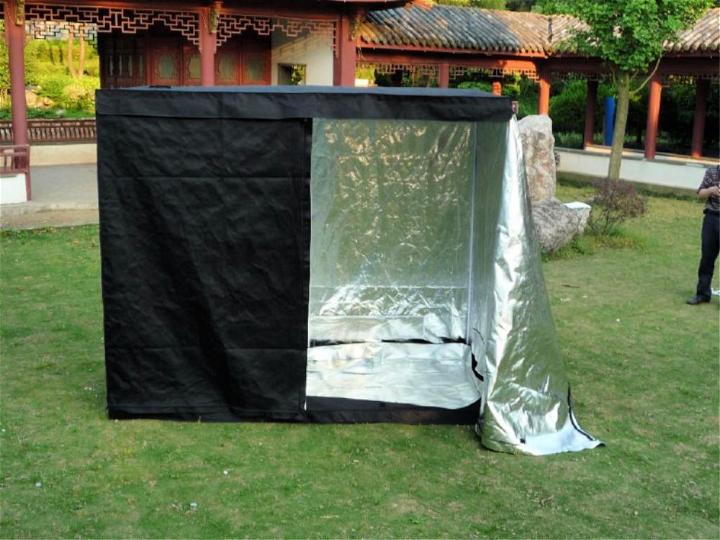
Assembling a DIY grow tent is a fulfilling project that allows you to cultivate plants year-round. Everything Backyard‘s guide walks you through the process, detailing the materials needed such as panda film, an adjustable rack, LED lights, and more. With an emphasis on cost-effectiveness, this instructive resource outlines steps to build a sturdy and efficient grow space.
Learn how to set up the rack, position the fan, and secure the film, ensuring your plants thrive in a controlled environment. Perfect for indoor or outdoor setups, this guide ensures your DIY grow tent is near essentials like water and power. Plus, get insights on the best frames and fabrics to use for durability and plant health. Get ready to enjoy homegrown produce with your very own grow tent!
6. Simple DIY Grow Tent Under $33
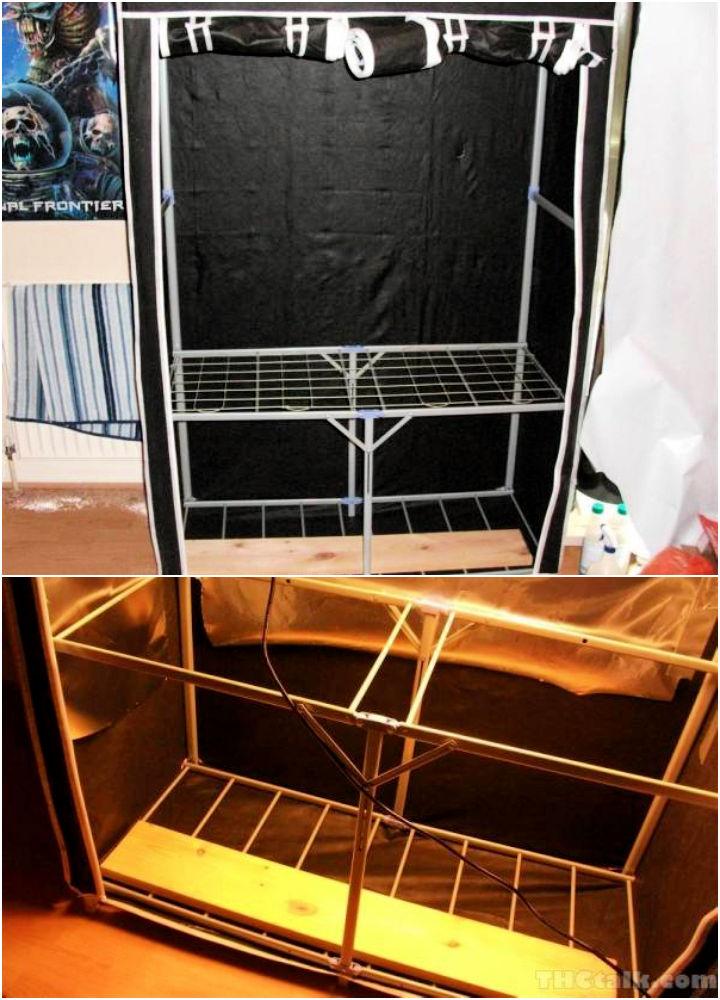
For those on a budget or just starting out, crafting a DIY grow tent is a savvy move. This guide offers a step-by-step approach to constructing an affordable grow tent using a double “pop-up” canvas wardrobe and other easily accessible materials like Mylar reflective sheeting and duct tape. With a few household tools, you can create a functional space for your plants.
The process involves setting up the wardrobe, lining it with reflective sheeting to prevent light leaks, and making provisions for ventilation and lighting. By repurposing simple items, you can have a grow tent ready without breaking the bank. This method is not only cost-effective but also a fun and rewarding DIY project. thctalk
7. Make Your Own Grow Tent Under $2
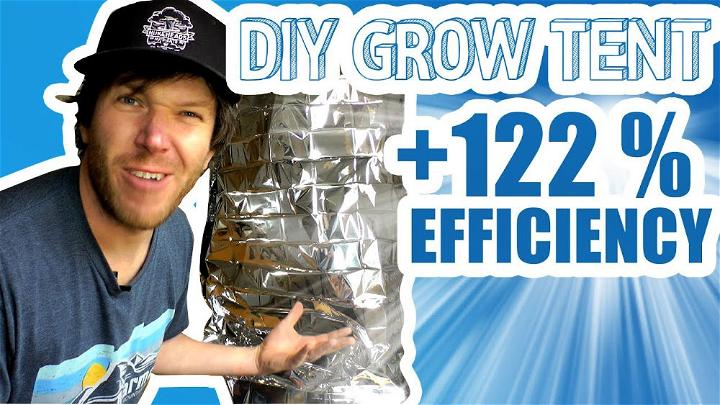
Transform your indoor gardening setup with a budget-friendly DIY grow tent, as demonstrated in this informative YouTube video. For just around $2, you can enhance the efficiency of your grow lights significantly—by up to 122%! The video walks you through a simple process, utilizing a Mylar blanket and a hula hoop from your local dollar store, plus a few household items.
This clever hack doesn’t require advanced skills or expensive materials. It’s an accessible project for those eager to optimize their plant growth without breaking the bank. The engaging tutorial on YouTube ensures that creating an effective grow space is both achievable and economical.
8. Building a Grow Box With PVC Pipe
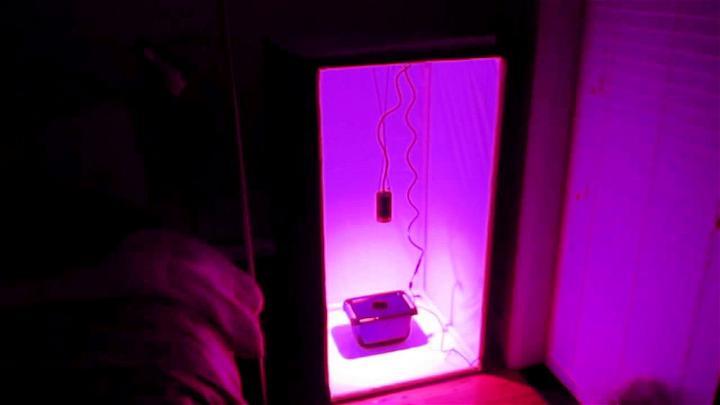
Building a grow tent with PVC is an efficient and cost-effective way to create a controlled environment for your plants. In this helpful guide, we explore how to construct a sturdy 2’x2′ PVC tent that stands 4′ tall, perfect for indoor gardening enthusiasts. The tutorial covers the assembly of a small DWC (Deep Water Culture) system, ideal for testing the efficacy of LED lighting on plant growth.
With an emphasis on practicality, the instructions are clear and suited for those looking to cultivate anything from hot peppers, like the Trinidad Moruga Scorpion, to leafy greens. Discover how LED lights can impact your plants compared to CFL bulbs, and learn to customize your grow space for maximum yield. Keep your gardening passion thriving year-round with this innovative DIY project.
9. Homemade 4-Tray Grow Tent Under 50-Bucks
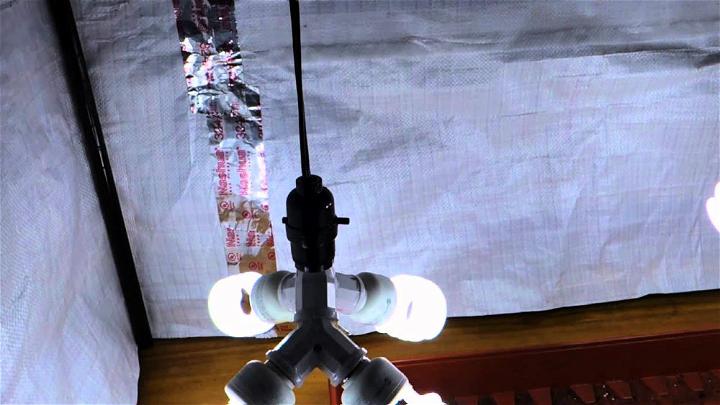
Looking to jump-start your home gardening with an affordable DIY project? Mike & Anna’s YouTube video showcases how to construct a homemade 4-tray grow tent for less than $50. Ideal for seed starting, this grow tent allows you to nurture a variety of plants in a controlled environment without breaking the bank.
The video provides a step-by-step guide that is easy to follow, ensuring you can create a functional space for your seedlings using readily available materials. With this grow tent, maximize your produce yield and take a step towards self-sufficiency by starting seeds efficiently at home. Mike & Anna’s tutorial is engaging and instructive, making it a valuable resource for anyone interested in home gardening.
10. Amazing DIY Grow Tent Tutorial
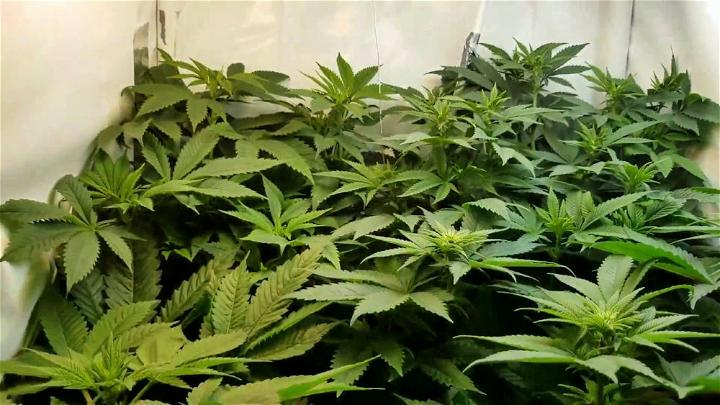
Embarking on an indoor gardening adventure? YouTube offers a wealth of resources to guide you through creating your own grow tent for marijuana cultivation. If you’re keen to construct a homemade grow tent or box, you can find inspiration and practical tips from fellow growers. One such resource is a video by Lit Growing, which showcases their journey in setting up an indoor marijuana grow space.
With clear visuals and helpful commentary, it’s an excellent starting point for anyone interested in DIY solutions for cannabis growing. As you watch and learn, remember to consider your local laws regarding marijuana cultivation to ensure you stay compliant. Dive into the video, take notes, and get ready to nurture your green thumb in your personalized grow area. youtube
Conclusion
In conclusion, crafting your own DIY grow tent is not just an engaging project but a practical solution to year-round gardening, regardless of external weather conditions. This guide has walked you through 10 easy DIY grow tent setup ideas, highlighting essential steps like space planning, frame selection, cover choosing, lighting installation, ventilation setup, temperature monitoring, and accessory consideration.
Implementing these ideas can transform your indoor gardening efforts, offering a controlled environment for your plants to flourish. We hope this guide empowers you to build a successful and efficient grow tent, bringing you closer to the joys of indoor gardening. Happy planting!
